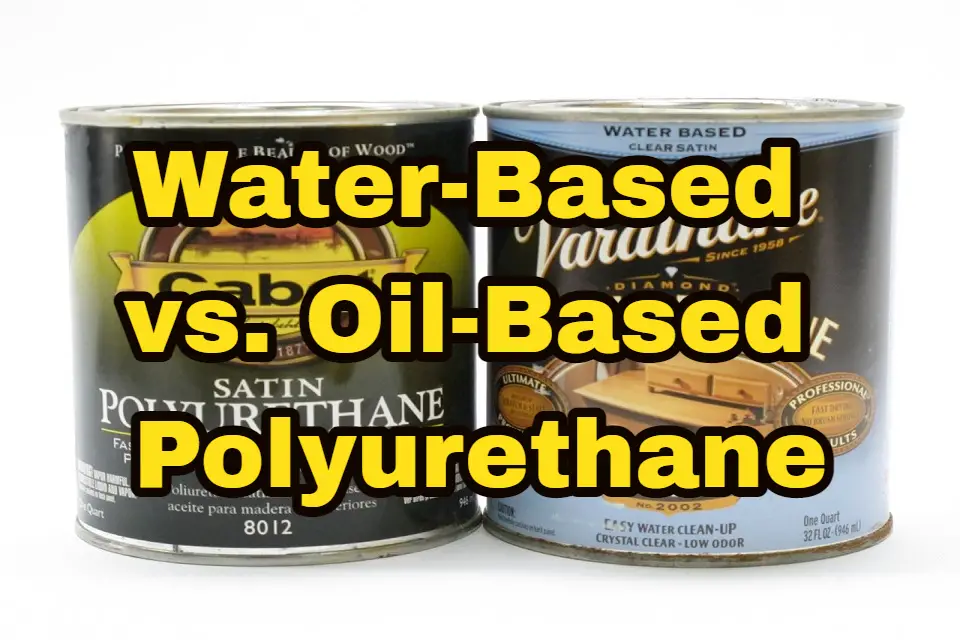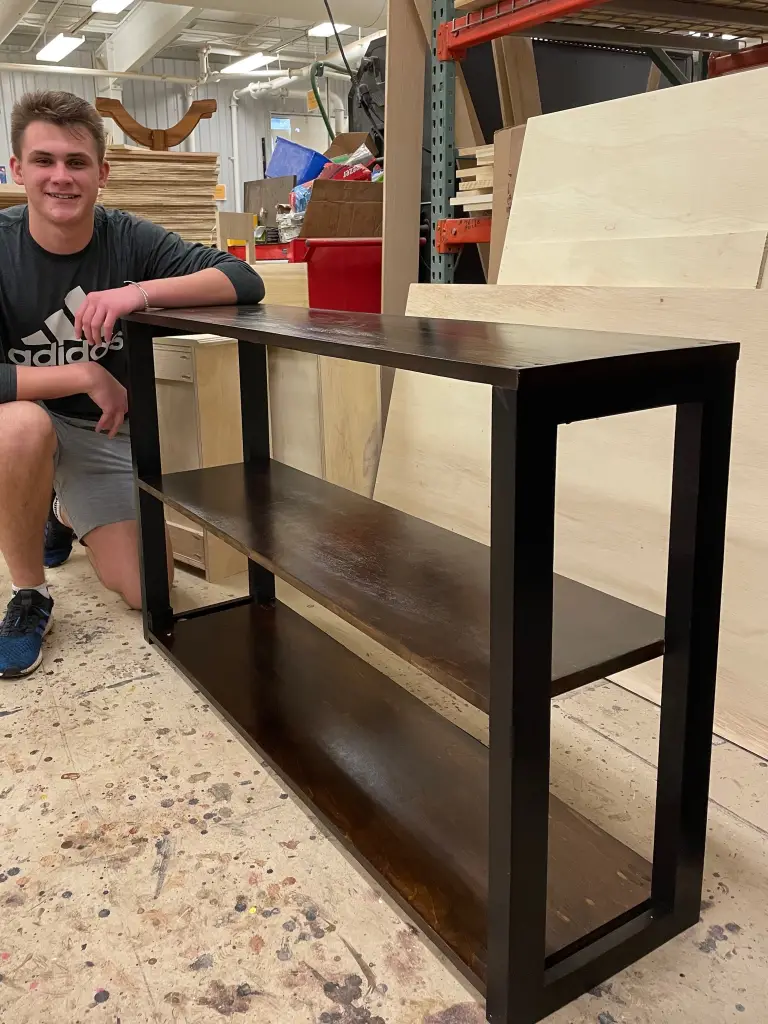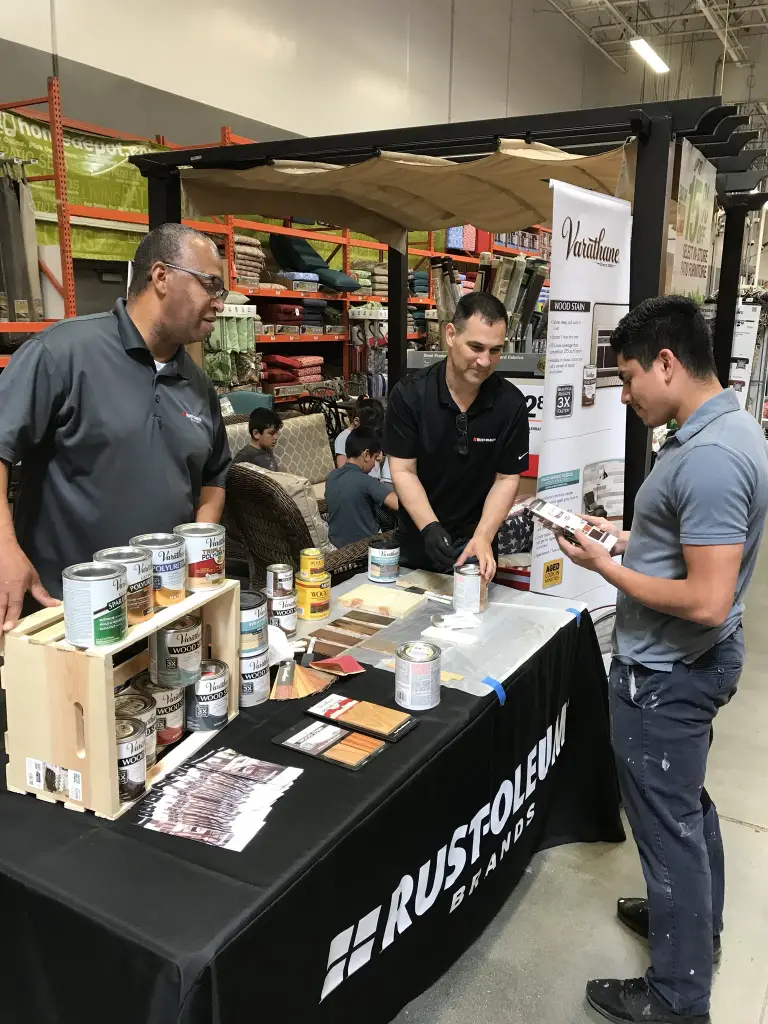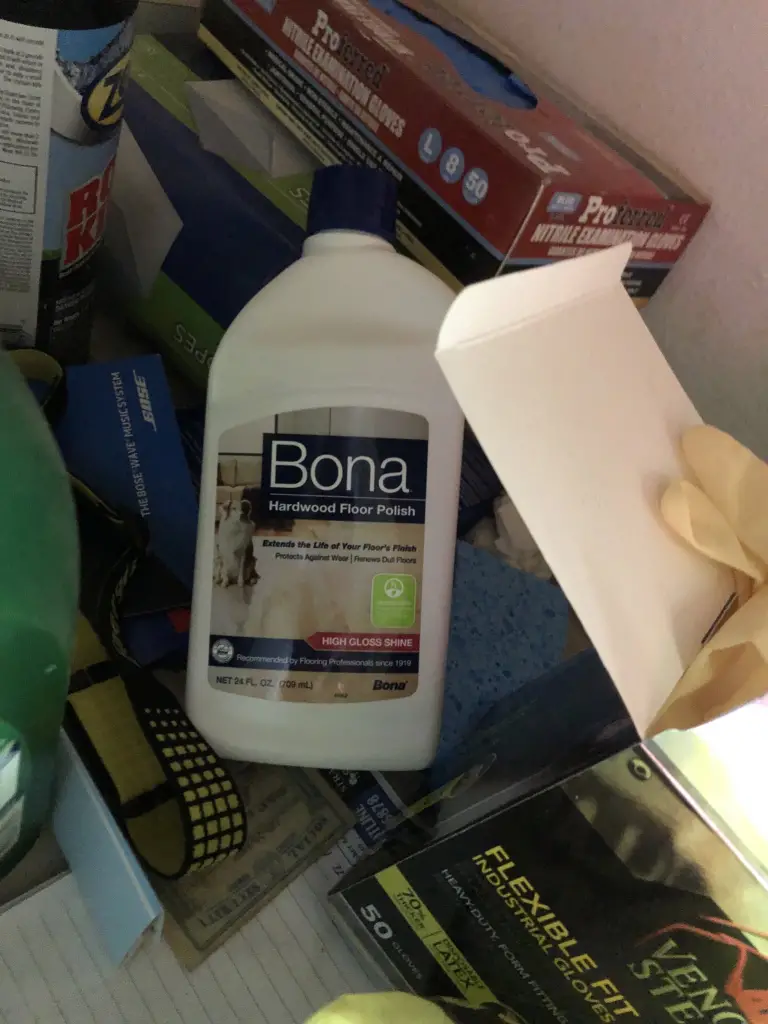We narrow everything down to water-based vs. oil-based types when categorizing polyurethane finish. Many crafters and painters can’t decipher the differences between these two types. The question is ‘what is the difference between them’ and which one is better?
Here’s what I learned from the investigation:
What is the difference between Water-Based And Oil-Based Polyurethane?
Oil-based polyurethane has a thicker, smoother, high sheen surface, is more durable, and dries longer than water-based polyurethane. However, water-based polyurethane is more environmentally friendly and safe due to its low VOCs, it is not easy to yellow and discolor, and it is more expensive. Both polyurethane finishes offer excellent protection and coating against UV rays, discoloration, and traffic.
But that’s just a quick snapshot of the question.
In this article, we’ll find out the differences between water-based and oil-based polyurethane finishes. We’ll also learn:
- Pros and cons of water-based and oil-based polyurethane
- Water-Based vs. Oil-Based Polyurethane: What are the differences?
- Application of two types of polyurethane on different surfaces
- The best water-based and oil-based polyurethanes

Let’s find out.
Property Comparison
| Properties | Water-based polyurethane | Oil-based polyurethane |
|---|---|---|
| Durability | Less durable | More durable |
| Color | Doesn’t affect the color | Add amber to dark poly |
| Clarity | completely clear | A little yellowing |
| Shine | low | High |
| VOC & Odor | Zero or little odor/low VOC | High odor level/high VOC |
| Thickness & Hardness | Thin | Thick and hard |
| Applying | Only synthetic brush and roller applicator | Roller, brush, lambswool applicator |
| Cost | Costlier (between $40 to $100 per gallon | Relatively cheaper (between $25 to $90 per gallon) |
| Application | Less application | Wider application |
| Waterproof | Moderate | High |
| Texture | Slightly coarser and rougher | Smooth |
| Clean up | With and soap to clean | Requires respirator and solvents |
| VOC | Low VOC | High VOC |
What is Polyurethane?
Polyurethane is a synthetic resin and a class of organically-composed polymer units linked as ingredients for making foams, adhesives, carpet, or bedding underlay. Polyurethane exists in various forms and can be made into a rigid or flexible material.
As a plastic material, polyurethane is used to make paint. It is also a constituent of heat- or water-resistant substances. Naturally, when used as a varnish and applied on surfaces, polyurethane reinforces the surface’s resistance level to heat, moisture, scuff, mar, abrasion, water, and household solvent. They can also serve in commercial applications to resist chemicals.
There are two types of polyurethanes: water-based and oil-based poly, so what are the characteristics of each?
Water-Based Polyurethane pros and cons
Pros
- Fast Drying Time: water-based fully dries out quickly within 4-6 hours.
- Optional Sanding: Sanding between coats is not necessary with water-based poly, but sanding will provide better results. Therefore, I will still choose to sand carefully with fine sandpaper.
- Low odor: water-based poly gives off a low odor level.
- Eco-friendly: water-based poly is environmentally friendly due to its low volatile organic compound (VOC).
- No color change: Water-based poly finish doesn’t alter the color of your project over time
Cons
- Expensive: water-based poly finish can be very
- Low stain and scuff resistance
- requires more coats and inter-coating sanding
- Limited application options: you can only apply using synthetic brush or microfiber roller

Oil-Based Polyurethane pros and cons
Pros
- Comprehensive Application options: You have a wide range of options to apply your oil-based poly on the floor surface. You can go to the different roller, paintbrush, and lambswool applicator options.
- Durability: Oil-based can withstand a lot of abuse. When faced with pets, they don’t spoil. Besides, oil-based poly also lasts longer, up to 10 years.
- Relatively less Costly: You don’t have to break the bank to get or use oil-based poly. Cons
- Longer Drying time: oil-based poly takes longer to dry when you’re pressed for time.
- High odor level: oil-based can produce an unbearable odor level.

Water-Based vs. Oil-Based Polyurethane: What are the differences?
Durability
Typically, oil-based poly is more durable than its water-based counterpart. It can withstand a lot of abuse and will resist heat, scuff, moisture, mar, and abrasion more readily than the water-based type. However, water-based is more dent-resistant. While both types of polyurethane finish can last up to 10 years, oil-based tend to offer more longevity. It doesn’t matter; low-quality oil-based or water-based poly won’t last long.
Drying Time & Cure
Usually, a water-based poly finish dries fast to touch. Within 4-6 hours, the coat is dry, leaving you to apply the next poly layer. On the contrary, oil-based poly may take 3-5 days before it fully dries. So, if you’re pressed for time and need to finish up a project within a short timeframe, water-based will be the right pick.
The cure time it takes for water-based poly to cure is far lesser than oil-based poly. Depending on the brand, the water-based finish can take approximately 3-7 days to cure after which you can work on your project thoroughly. On the other side, oil-based poly can take up to 30-60 days before it fully cures.
Color, Clarity, and Shine
When it comes to wood color, a water-based finish doesn’t change the color of your wood. Instead, it dries clear and to the touch. Once it dries, it retains the wood’s natural color. It doesn’t matter whether your wood is gray, white, or light. If your wood is dark or yellow, an oil-based finish will discolor it amber or darken it more.
Texture
The water-based finish has a slightly rougher texture because no lubricant is added. While oil-based poly contains a certain amount of oil-based lubricant, the surface is smoother. This element makes the poly have a smooth texture.
Safety: VOC’s & Odor
There are differences between water-based vs. oil-based polyurethane finish when it comes to odor and volatile organic compound (VOC). Water-based poly contains low VOC and doesn’t give off much odor. Oil-based is very high in VOC and releases a lot of overpowering odor. Oil-based poly is composed of flammable and hazardous chemicals and so is toxic. Water-based polyurethane comes with little or no toxicity and is safer to use.
Waterproof
Neither of the two types of poly finish is waterproof. However, they both have strong resilience and resistance to water and water penetration. While they both repel water and protect your surface from absorbing water, water-based and oil-based poly products will never offer proof against water. So, you won’t get 100% waterproof features from both types of polyurethane.
Number of Coats
Typically, water-based polyurethane is thinner and will need more coats than thick oil-based. The more coats you add to water-based poly, the more protection your wood will get. However, oil-based poly is thick, and if you add more coats, you’ll expose the finish to sheeting, scratching, and chipping.
Thickness and Hardness
Oil-based poly is thicker and more complex than its water-based counterparts. This is why they don’t require more coats. Unlike water-based poly, oil-based contains oil lube which adds to the thickness and hardness of the finish. Besides, the thickness of oil-based makes it cover more square feet than water-based.
Compatible Substrates
The good thing is that the two types of poly are versatile and can work on a wide variety of surfaces. However, you can place water-based poly over a previously finished water-based. Water-based will adhere to itself. However, the rule is different if you’re working with oil-based. It doesn’t adhere or stick to itself and so will need sanding.
Applying & Clean Up
You can only apply water-based poly using a synthetic brush and lambswool applicator. On the other side of the coin, you have different options to apply oil-based poly. You can use different kinds of roller such as foam roller, microfiber roller, and mohair roller. It also allows you to use a natural and synthetic brush and a lambswool applicator.
You’ll need some hydrocarbon chemicals to clean up oil-based poly. These are dangerous chemicals that can affect your health and cause irritation when inhaled. This is why you’ll need a well-ventilated workspace and a respirator when working with an oil-based poly finish. The case is not the same with cleaning up water-based poly. A mixture of soap and water will do the magic.
Cost
Generally, oil-based, despite its relative edge, comes out relatively cheaper than water-based poly. The reason is simple. A water-based finish requires you to add more coats and sanding papers. All these add up to what makes it pricier.
Application of two types of polyurethane on different surfaces
Cabinets & Table
Oil-based and water-based poly products are both perfect and efficient on furniture. They both provide clarity and quality shine. But oil-based poly will do a more excellent job with protection. In any case, the underlying condition you must meet is to make sure the coats are fully dry and cured.
Being a high-traffic area, your kitchen cabinets need a poly finish that will offer more significant and thicker consistency. Oil-based poly is considered a preferred choice over water-based due to its thick layer and consistent capacity to hold out against dust, scratches, abrasion, and wear.
Because it lasts longer and is more durable, oil-based poly is often considered the perfect option to apply on tabletops. Besides, the polymer in oil-based polyurethane coating is stronger enough to withstand scratches and abrasion than water-based polyurethane coating. Hence, your table has protection against scratches and moisture.
hardwood floors
The oil-based poly finish features more thickness and hardness to protect your hardwood layers. This way, it can build up thick coats capable of protecting your hardwood against moisture, abrasion, wear, and the elements. Don’t forget. Hardwood surfaces are a high-traffic area that needs a long-lasting finish like oil-based poly.
oil-based vs. water-based Minwax polyurethane
Whether in its oil-based or water-based product, Minwax polyurethane finish offers incredible durability, clarity, and long-lasting feature. They are both suitable on various surfaces, such as floors, cabinets, doors, furniture, and woodwork. But oil-based works better and offers a more long-lasting finish. While the Minwax water-based topcoat finish takes between 4 and 6 hours to fully dry, the oil-based poly takes more time. Besides, Minwax oil-based is suitable for the finished and unfinished wood.
Best Oil-Based Polyurethane – RUST-OLEUM 130031 Varathane
If you’re in search of one of the best oil-based poly finishes, Rust-Oleum 130031 Varathane stands out from the crowd. This premium floor finish offers classic clarity on a wood floor. It features an excellent self-leveling feature that makes it eliminate brush marks.
Whether you use the finish on low or high-traffic areas doesn’t matter. Rust-Oleum 130031 Varathane finish will easily resist any mar, scratch, or abrasion. Besides, it will produce a warm shine and golden glow on your project.
The formulation boasts excellent durability and a long-lasting feature that enables it to hold out against wear and scuff. Guess what? You have a wide range of sheen choices to make: gloss, semi-gloss, satin, or matte.
The Rust-Oleum is also perfect for both bare and treated wooden surfaces. If the surface is previously finished, this formulation will work effectively.

Best Water-Based Polyurethane –Bona Hardwood Floor Polish, Low Gloss, 32 Fl Oz
Bona water-based polyurethane comes as one of the best finishes for commercial applications on hardwood floors. This commercial-grade finish works well on hard and thick surfaces. The product is highly resistant to solvent, scratch, and scuff. This means that this product will neither soil nor damage when hit by pets.
What’s more, Bona water-based poly finish boasts a highly low emission rate of volatile organic compounds (VOC). This makes it impressively eco-friendly. The product also stands out from the crowd considering it stands at 125 g/L.

Generally, water-based poly finishes dry quickly, but this product offers a premium drying time. It dries fully faster than many of its counterparts on the market. Within 2-3 hours, this product will dry and be prepared to take on sanding.
The icing on the cake is the product’s versatile application. It can be used on a wide range of surfaces.
Final words
Knowing the questions and differences in water-based vs. oil-based polyurethane offers us the required information to decide which one to use. Oil-based has become increasingly popular due to its more versatility. It can work on a broader range of surfaces than water-based poly. Another essential feature that crafters love about oil-based poly is its durability. On the other side of the coin, While water-based polys are costlier, it dries more quickly. Water-based is more eco-friendlier, thanks to its lower VOC.

My name is Mark, and I am a software engineer and the founder of OnWoodWorkingArt.
I grew up with a passion for woodworking and now have my woodworking studio with a group of like-minded friends who love to create woodworking. My dream is to have a more extensive workshop and be able to make woodworking my main business.